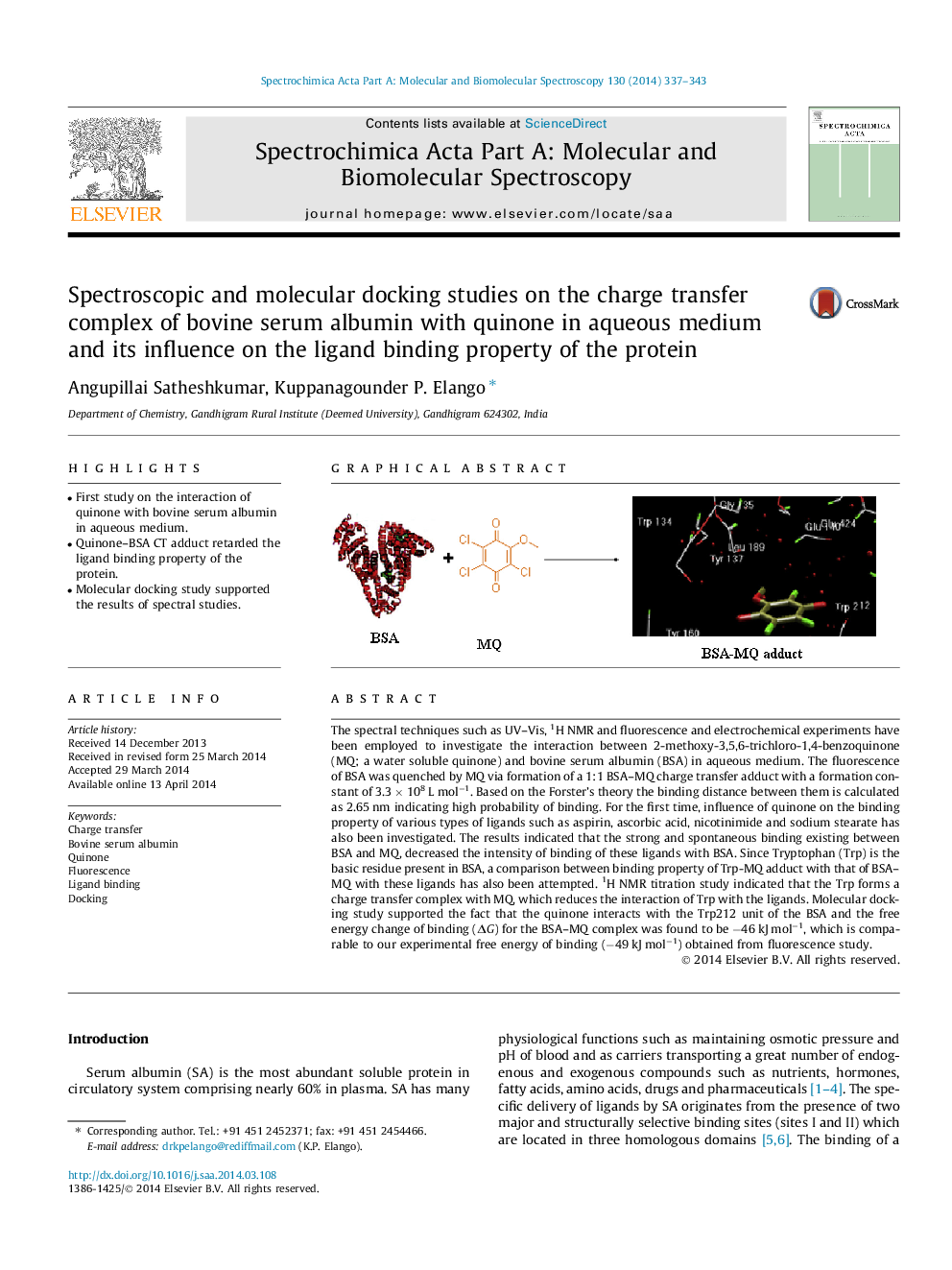| کد مقاله | کد نشریه | سال انتشار | مقاله انگلیسی | نسخه تمام متن |
|---|---|---|---|---|
| 1230360 | 1495238 | 2014 | 7 صفحه PDF | دانلود رایگان |
• First study on the interaction of quinone with bovine serum albumin in aqueous medium.
• Quinone–BSA CT adduct retarded the ligand binding property of the protein.
• Molecular docking study supported the results of spectral studies.
The spectral techniques such as UV–Vis, 1H NMR and fluorescence and electrochemical experiments have been employed to investigate the interaction between 2-methoxy-3,5,6-trichloro-1,4-benzoquinone (MQ; a water soluble quinone) and bovine serum albumin (BSA) in aqueous medium. The fluorescence of BSA was quenched by MQ via formation of a 1:1 BSA–MQ charge transfer adduct with a formation constant of 3.3 × 108 L mol−1. Based on the Forster’s theory the binding distance between them is calculated as 2.65 nm indicating high probability of binding. For the first time, influence of quinone on the binding property of various types of ligands such as aspirin, ascorbic acid, nicotinimide and sodium stearate has also been investigated. The results indicated that the strong and spontaneous binding existing between BSA and MQ, decreased the intensity of binding of these ligands with BSA. Since Tryptophan (Trp) is the basic residue present in BSA, a comparison between binding property of Trp-MQ adduct with that of BSA–MQ with these ligands has also been attempted. 1H NMR titration study indicated that the Trp forms a charge transfer complex with MQ, which reduces the interaction of Trp with the ligands. Molecular docking study supported the fact that the quinone interacts with the Trp212 unit of the BSA and the free energy change of binding (ΔG) for the BSA–MQ complex was found to be −46 kJ mol−1, which is comparable to our experimental free energy of binding (−49 kJ mol−1) obtained from fluorescence study.
Figure optionsDownload as PowerPoint slide
Journal: Spectrochimica Acta Part A: Molecular and Biomolecular Spectroscopy - Volume 130, 15 September 2014, Pages 337–343
